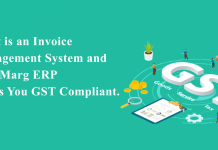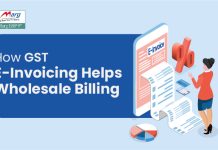- Is it Mandatory to Generate E-Invoicing QR Code for B2C Transactions?
- About QR Code in E-Invoicing
- What Information E-Invoicing QR Code Contain?
- What Documents are Required For E-Invoicing QR Code?
- QR Code for B2C Invoices
- QR Code to GST B2C Invoice Applicability
- Where and How to Generate E-Invoicing QR Code?
- Bottom line
Table of Contents
ToggleIs it Mandatory to Generate E-Invoicing QR Code for B2C Transactions?
All the B2B invoices are authenticated online under the e-invoicing system by using the GSTN portal. Once a business uploads an invoice on the Invoice Registration Portal (IRP), it will get a unique number. The invoice data is transferred to the e-way bill portal and GST portal from the IRP in real-time. Only B2B invoices need to be uploaded to the e-invoicing program. But for B2C invoices, a dynamic QR code e-invoice should be generated.
E-Invoicing- Latest Updates
Updated on 8th March 2021: As per the recent CGST Notification 05/2021, entities having turnover above Rs. 50 Cr. are required to generate E-Invoice from 1st April 2021.
November 29, 2020
A notification has been issued by the CBIC to remove the penalty if B2C invoices fail to comply with the provisions of the dynamic QR code from December 1, 2020, to March 31, 2021.
November 10, 2020
Taxpayers with an average turnover above Rs. 100 Cr. in any of the previous financial years from 2017-18 must have an e-invoicing QR code from January 1, 2021.
October 1, 2020
Thirty days of grace period has been provided to the taxpayers applicable to generate IRN or Invoice Reference Number. However, the validity of this grace period is from October 1, 2020, to October 31, 2020, for the invoices generated in this period.
September 30, 2020
To check e-invoicing applicability, the average turnover from 2017-18 to 2019-20 must be checked. Dynamic QR code can now be generated for B2C invoices till December 1, 2020.
July 30, 2020
CBIC has introduced a fresh e-invoice format by cutting 13 fields down and adding 20 fields. Some fields also have changed the character length.
Only taxpayers with Rs. 500 Cr. turnover or above fall in the category of e-invoicing system.
Special Economic Zones also no longer have to issue e-invoices.
March 23, 2020
The e-invoicing QR code implementation has been extended till October 1, 2020. Insurance, financial institutions, banking, GTA, NBFCs, and passenger transport sectors have been exempted from implementing QR code in GST invoice.
About QR Code in E-Invoicing
QR code or Quick Response Code is a 2D barcode that is applied in machine-readable (encrypted) form. It consists of essential details about the products. The GST QR code is used in the e-invoicing system to quickly provide details about a specific invoice without using an external source to retrieve those details. Here are some of the purposes of using QR code GST:
- Improves the ease of doing business online to record the invoice data for accurate and instant input.
- Indirect tax officers can easily find out the validity of a specific invoice, and it consists of all the details needed through an e-invoice QR code scanner.
- Once the e-invoice is returned from the IRP to the supplier with a QR code, the supplier can easily export the invoice to PDF with e-signature using a QR code.
What Information E-Invoicing QR Code Contain?
The QR code must have the following details :
- Supplier’s GSTIN
- Buyer’s GSTIN
- Supplier’s invoice number
- The date on which invoice is generated
- Value of invoice
- The main item must have an HSN code
- Number of items
- Unique IRN number
What Documents Are Required For E-Invoicing QR Code?
The GST Law has made QR code on invoice mandatory from October 1, 2020. It is important for taxpayers with an average turnover exceeding Rs. 500 Cr in the preceding FYs from 2017-18. It is now extended to businesses with aggregate turnover exceeding Rs. 100 Cr in preceding FYs from 2017-18, as of January 1, 2021. Hence, all taxpayers have to issue e-invoice for B2B credit notes, tax invoices, and debit notes. A space for a QR code GST invoice should also be added. The QR code will also be required for RCM supplies and exports, as they need tax invoices.
QR Code for B2C Invoices
B2C transactions consist of all the deals made with end-users or unregistered customers. The consumers wouldn’t claim an input tax credit for B2C invoices. A taxpayer still needs to generate B2C invoices QR code, via Notification 14/2020 – Central Tax, instead of 71/2021 – Central Tax. However, businesses don’t have to generate QR code in e-invoice. It is compulsory for all taxpayers with over Rs. 500 Cr of annual turnover from FY 2017-18 to generate QR code for GST invoice as mandated by the notifications from December 1, 2020.
QR Code to GST B2C Invoice Applicability
A dynamic QR code must be generated on B2C invoices raised by a supplier with an annual turnover of above Rs. 500 Cr from FY 2017-18. A dynamic QR code must be provided using a digital display, and payment’s cross-reference should be provided.
Note – Dynamic QR code is a barcode that can be edited and has more features like password protection, scan analytics, access management, and device redirection. However, the image of the QR code is less dense.
Where and How to Generate E-Invoicing QR Code?
The supplier has to upload the invoice’s JSON file on the IRP to generate an IRN number. After generating the Invoice Reference Number, they can affix QR code and digital signature to JSON in the Invoice Registration Portal.
Bottom line
The government can have better control and management over the B2C transactions by having B2C invoices with a QR code. It is also good to promote digital payment options. Customers can use different apps to make payments on the go. They can easily make payments by scanning the QR code with one touch.






